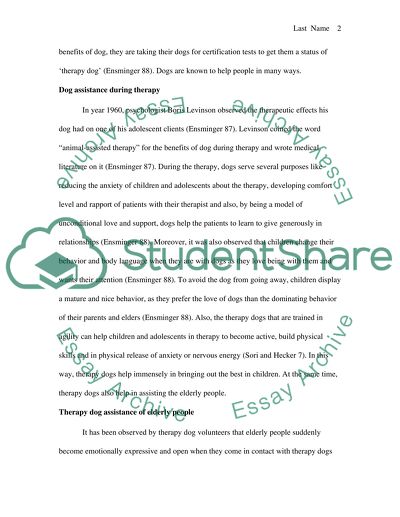Therapy Dogs: Source of Healing Through Unconditional Love Research Paper. Retrieved from https://studentshare.org/nursing/1439987-dog-therapy
Therapy Dogs: Source of Healing Through Unconditional Love Research Paper. https://studentshare.org/nursing/1439987-dog-therapy.


